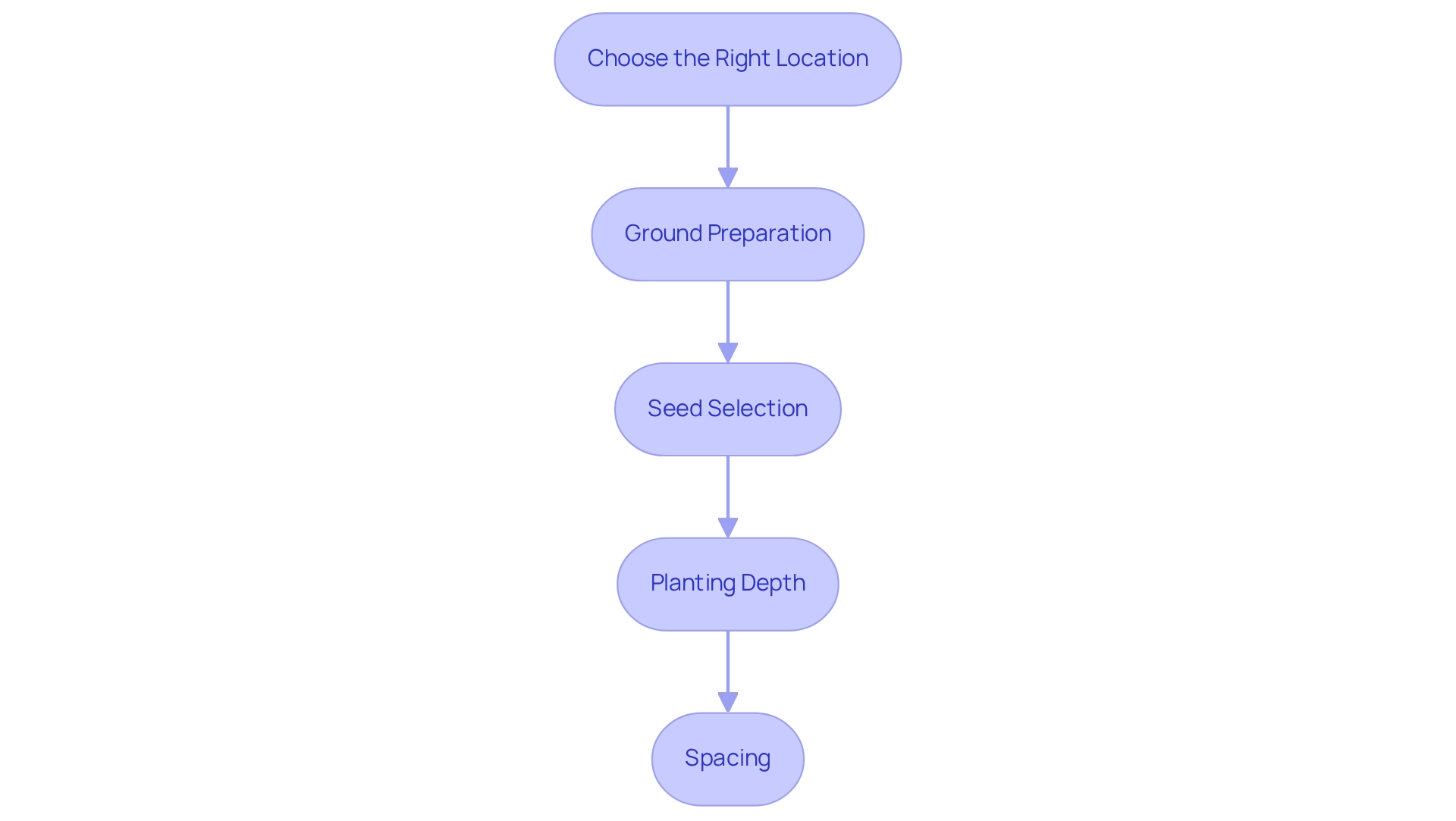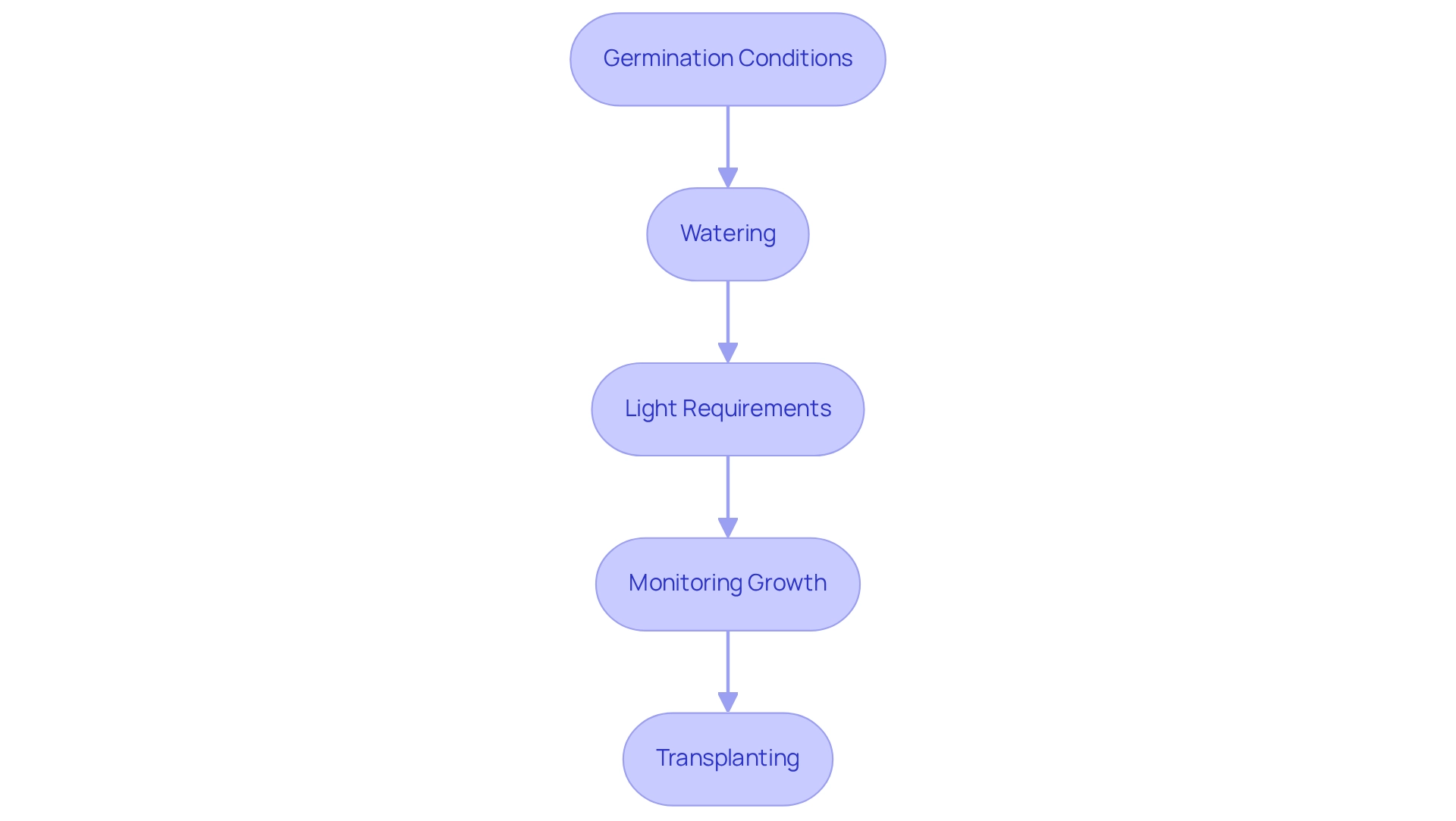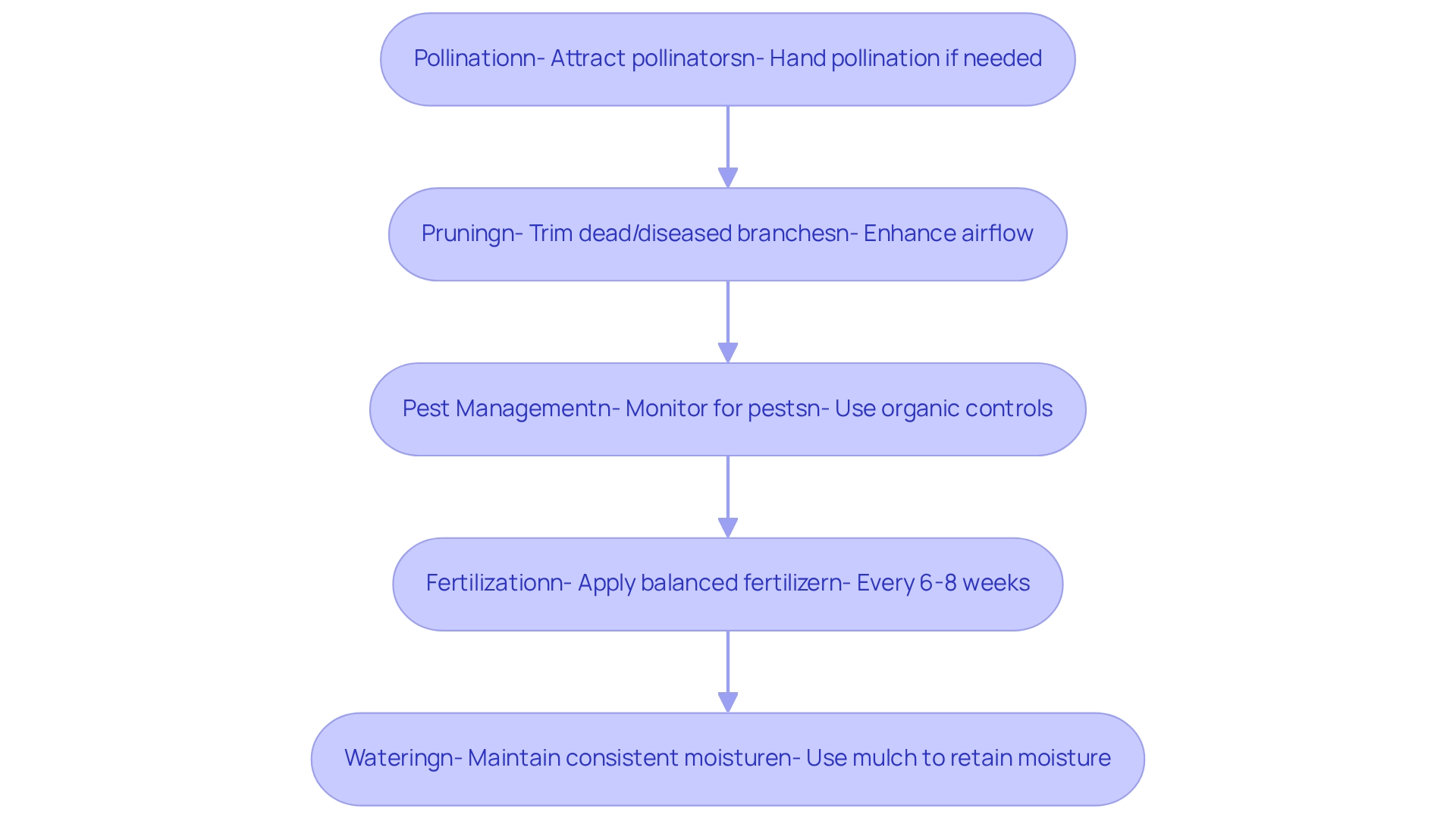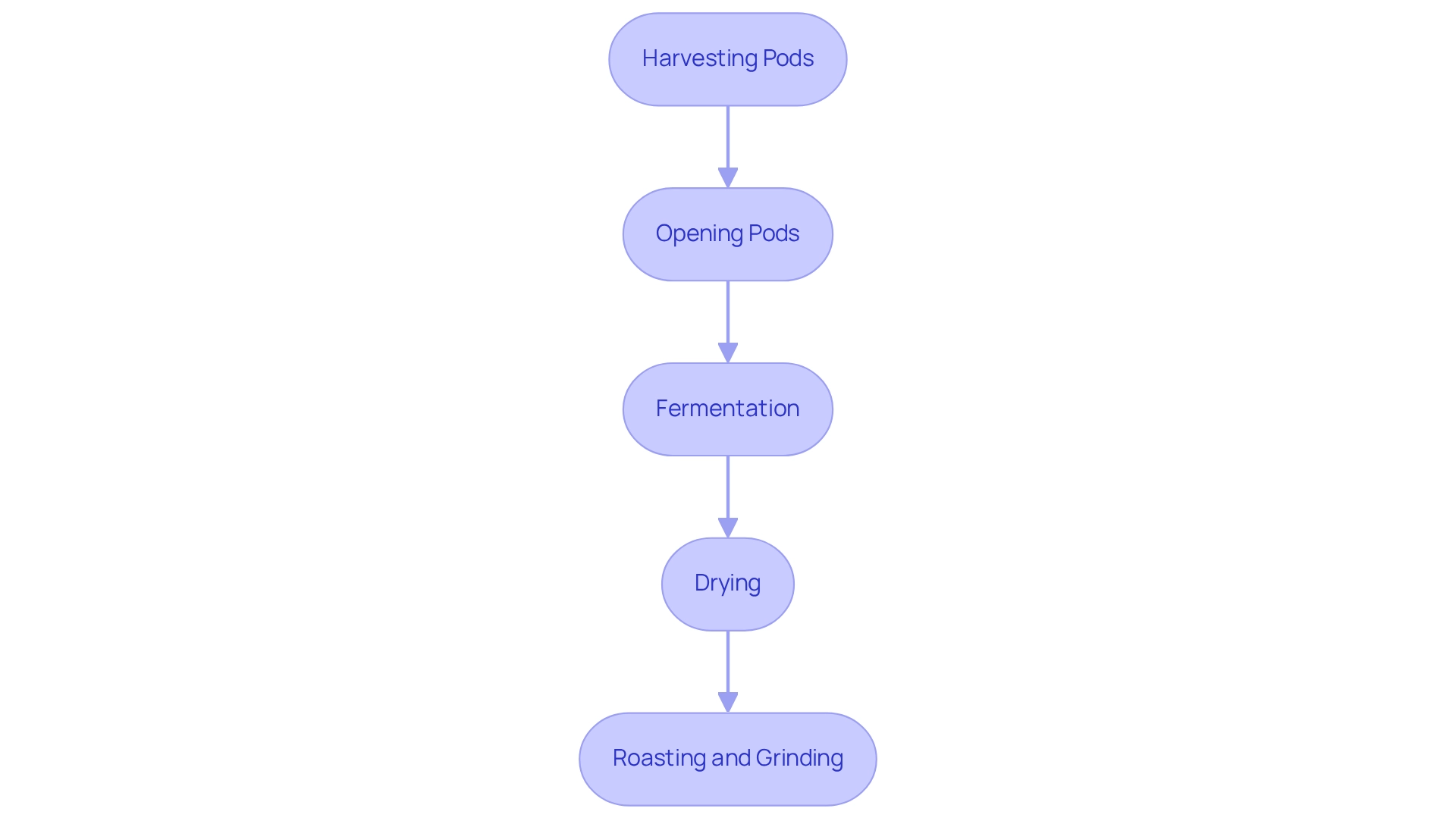The cacao chocolate tree (Theobroma cacao) is the magical plant behind every chocolate bar—and yes, you can grow it at home, even in the U.S., with the right conditions.
Whether you want the bold flavor of a Forastero, the prized aroma of a Criollo, or the balanced sweetness of a Trinitario, you can find your ideal cacao tree right here:
👉 Shop Forastero Cacao Tree
👉 Shop Criollo Cacao Tree
👉 Shop Trinitario Yellow Cacao Tree
👉 Shop Trinitario Red Cacao Tree
Everglades Farm ships high-quality trees straight from our Florida nursery to your door—ready to plant and enjoy.
👉 Thinking of starting with cacao? Explore our Cacao Chocolate Tree Collection — perfect for home growers craving something unique and delicious.

Growing and harvesting cacao chocolate trees can be a rewarding journey, but it often comes with its own set of challenges. Understanding the specific environmental needs of these trees is crucial. By nurturing them with the right conditions, you set the stage for a fruitful harvest.
Proper planting techniques play a vital role in this process. Imagine the joy of watching your cacao trees thrive as you implement these practices. It’s not just about planting; it’s about creating a supportive environment where your trees can flourish. Maintenance practices, too, are essential. Regular care and attention will contribute significantly to the production of high-quality chocolate.
As you embark on this gardening adventure, remember that you are not alone. Many gardeners face similar hurdles, and by sharing experiences, we can learn and grow together. Take these steps to heart, and you’ll be well on your way to enjoying the fruits of your labor. Let’s cultivate not just trees, but a passion for gardening that brings us closer to nature.
Introduction
In the world of chocolate, the journey from bean to bar begins with the cacao tree—a remarkable plant that flourishes in the warm, humid climates of the tropics. For those of us who dream of cultivating this treasured tree, understanding its unique characteristics and requirements is essential. From selecting the right location and preparing the soil to nurturing seedlings and managing pests, each step plays a critical role in ensuring a fruitful harvest.
This comprehensive guide delves into the intricacies of cacao cultivation, offering valuable insights and practical tips. It aims to help aspiring growers navigate the fascinating process of transforming cacao pods into delectable chocolate. Have you ever wondered how your favorite treat comes to life? Whether you’re a seasoned farmer or a curious enthusiast, the secrets of successful cacao farming await your discovery. Together, let’s embark on this nurturing journey to unlock the joys of chocolate making.
Understand the Cacao Tree: Characteristics and Requirements
The cacao chocolate tree, scientifically known as Theobroma cacao, is a small evergreen plant that is native to the tropical regions of Central and South America. Growing between 13 to 26 feet tall, it flourishes in warm, humid environments. Understanding the needs of the cacao chocolate tree can truly make a difference in your gardening journey.
Cacao chocolate trees thrive in temperatures ranging from 70°F to 90°F (21°C to 32°C) and require high humidity levels of at least 80%. They are quite sensitive to frost, so it’s crucial to keep them safe from temperatures below 60°F (15°C). Recognizing these
climate needs is essential, as the cacao chocolate tree flourishes in areas with specific temperature and precipitation patterns, typically found between 10ºN and 10ºS of the Equator.
The ideal soil for the cacao chocolate tree is rich, well-draining, and slightly acidic, with a pH between 5.5 and 7.0. Loamy soil that retains moisture without becoming waterlogged is what you should aim for.
Cacao chocolate trees naturally grow in the understory of rainforests, which means they thrive in partial shade. Be mindful that direct sunlight can scorch their leaves, so providing around 25% shade is beneficial.
- Watering: Regular watering is vital, especially during dry spells. The soil should remain consistently moist but not soggy to ward off root rot.
Recent studies emphasize the significance of climate conditions in the cultivation of the cacao chocolate tree, as this tree requires specific temperature and rainfall patterns to thrive. Ongoing research is also focused on developing disease-resistant chocolate varieties and effective biological control methods for insect pests. As L. Russell Cook noted, "Research is being done to develop disease-resistant varieties and effective biological control methods for insect pests." This research is crucial for enhancing the prospects of successful cocoa farming. By understanding these traits, you can create an ideal environment for your cacao chocolate tree, which will lay the groundwork for fruitful growth and bountiful yields. Remember, nurturing your cacao plant is a journey, and with the right care, you can cultivate a rewarding experience.
👉 Want to know where your trees are coming from? Learn more about
Everglades Farm
Prepare for Planting: Location, Soil, and Seed Selection
To successfully plant a cacao tree, let's explore these essential steps together:
-
Choose the Right Location: Begin by selecting a site that receives partial shade and is shielded from strong winds. Ideally, this area should be near taller plants that can offer natural shade, as cocoa plants thrive in such environments. Picture a typical forest of cacao chocolate trees, composed of 75% cacao chocolate trees and 25% shade trees—this highlights just how vital shade is for cacao cultivation.
-
Ground Preparation: Next, assess the pH of the soil, aiming for a slightly acidic range of 5.5 to 7.0. You may need to modify the ground by incorporating organic matter like compost or well-decomposed manure, which can enhance fertility and drainage. This not only improves soil quality but also aligns with sustainable farming practices, similar to successful agroforestry systems.
-
Seed Selection: When it comes to choosing seeds, opt for healthy chocolate seeds from reputable suppliers. Look for seeds from the cacao chocolate tree that are plump and free from blemishes, preferably harvested from ripe cacao pods, which usually have higher germination rates.
-
Planting Depth: When sowing your seeds, bury them about 1 inch deep in the soil. It's important to keep the ground moist, but not waterlogged, to encourage healthy growth.
-
Spacing: If you're planting several saplings, be sure to maintain a distance of at least 10-15 feet between them. This spacing allows for adequate growth and airflow, which is essential for preventing disease and ensuring robust development.
By carefully choosing the right site, preparing the soil, and selecting premium seeds for the cacao chocolate tree, you lay the groundwork for a flourishing plant. Historical methods, such as the Cabruca agroforestry technique in Brazil, illustrate the benefits of integrating cocoa plants with indigenous species, fostering biodiversity while enhancing crop yields. For instance, Dengo chocolate, crafted using the Cabruca system, exemplifies sustainable cocoa farming that supports both biodiversity and local economies. Embracing these best practices not only nurtures the health of your cocoa trees but also contributes to sustainable gardening initiatives. As Caio Carvalho, president of the Brazilian Agribusiness Association, aptly noted, "It is madness, an aggressive and unmeasured posture" regarding current chocolate farming practices. This underscores the urgent need for sustainable methods in our sector.
Plant and Nurture: Germination to Transplanting
Once you have planted your cacao seeds, let's nurture them together from germination to transplanting:
-
Germination Conditions: It's essential to keep the substrate consistently warm, around 80°F or 27°C, while maintaining high humidity. Covering the pots with plastic wrap or a humidity dome can help retain moisture. Research shows that cacao chocolate tree seedlings under moderate shade achieved an impressive pod yield of 97.6% during the first main crop harvest. This highlights just how crucial optimal growing conditions are for your plants. Gently water the seeds to keep the ground damp, but avoid making it soggy. Remember, overwatering can lead to rot, so ensuring proper drainage is key.
-
Light Requirements: Position the pots in a spot with indirect sunlight, as direct sunlight can be too harsh for young seedlings.
-
Monitoring Growth: Germination typically takes about 2-3 weeks. Once your seedlings have developed several leaves and reached about 6 inches tall, they are ready for transplanting.
-
Transplanting: When it’s time to transplant, choose a cloudy day or late afternoon to minimize stress on your seedlings. Dig a hole that is three times the diameter of the root ball and gently place the seedling in the hole, covering the roots with soil. You might also consider sustainable techniques, like incorporating Trichoderma spp. as biostimulants, which can enhance cocoa productivity while promoting environmentally friendly practices.
By providing the right conditions during sprouting and carefully relocating your young plants, you will ensure a strong start for your cacao chocolate tree. As Karen Brooks beautifully expressed, "These are taken from inside the fruit of the chocolate plant-- it means 'food of the gods.'" In your hands, you hold something akin to ambrosia—an ambrosia we turn into nectar. This sentiment underscores the importance of cultivating cocoa plants not only for their yield but also for the joy they bring into our lives.
Maintain and Care: Pollination, Pruning, and Pest Management
To ensure your cacao chocolate tree thrives and produces abundant fruit, let’s explore some nurturing maintenance practices together:
-
Pollination: Cacao chocolate trees rely on cross-pollination for fruit production, and attracting essential pollinators like midges can be a delightful part of your gardening journey. Consider planting companion plants nearby to create a welcoming environment. If natural pollination isn’t sufficient, don’t worry—hand pollination can be a rewarding alternative. Simply use a small brush to transfer pollen between flowers, ensuring optimal fertilization rates.
-
Pruning: Regular trimming is crucial for maintaining your plant's shape and promoting healthy growth. As you care for your cacao, take a moment to remove any dead or diseased branches and thin out crowded areas to enhance airflow. Pruning during the dry season is advisable, as it minimizes stress on the plant, which can significantly impact yield.
-
Pest Management: Keeping a vigilant eye on your cacao plant for pests such as mealybugs and aphids is essential. Employing organic pest control methods, including neem oil or insecticidal soap, can help you manage infestations effectively. Regular examinations of leaves and stems for signs of pests or disease are crucial for preserving your plant's health.
-
Fertilization: Providing essential nutrients is key to your plant's vitality. Applying a balanced fertilizer every 6-8 weeks during the growing season will support its growth. Choose fertilizers specifically designed for fruit-bearing plants to ensure optimal results.
-
Watering: Consistent moisture is vital, especially during dry spells. Mulching around the base of the plant can aid in retaining soil moisture and suppressing weeds, contributing to overall health.
By implementing these maintenance practices, you will significantly enhance the vitality and productivity of your cacao chocolate tree, paving the way for a successful harvest. Remember, every step you take in caring for your cacao plant brings you closer to enjoying the fruits of your labor!
Harvest and Process: From Pod to Chocolate
Transforming your ripe cacao pods from the cacao chocolate tree into delectable chocolate is not just a process; it’s a rewarding journey that connects you with nature. Let’s walk through these essential steps together:
-
Harvesting Pods: With a sharp knife or machete, carefully [cut the ripe pods](https://anangtawiah.com/articles/details/The Ghana Cocoa Report 2024: Cocoa Harvesting in Ghana: Challenges, Efficiency, and Future Strategies-206) from the plant. It’s important to do this gently to minimize damage to the surrounding flowers and branches. Remember, having the right tools makes all the difference. Typically, we harvest from the cacao chocolate tree twice a year, in harmony with the tree's flowering cycle.
-
Opening Pods: After harvesting, use your machete to slice the pods of the cacao chocolate tree in half and extract the cacao seeds along with the surrounding pulp. This step is crucial for obtaining the ingredients we need for chocolate production.
-
Fermentation: Place the extracted seeds and pulp into a container and cover them with banana leaves. Allow this mixture to ferment for 5-7 days, turning it occasionally. This process is essential for enhancing the rich flavors of the seeds. For Criollo varieties, just 2-3 days of fermentation can make all the difference in taste.
-
Drying: Spread the seeds in the sun to dry for several days until they’re completely moisture-free. Keeping the drying temperatures under 65ºC is crucial to avoid mold and ensure the seeds’ quality. If you prefer, you can also use artificial drying methods with wood and fuel dryers to achieve the desired moisture content.
-
Roasting and Grinding: Roast the dried beans at a low temperature to enhance their flavor profile. Once roasted, remove the shells and grind the nibs into a paste. This paste can be further refined into chocolate by incorporating sugar and other delightful ingredients.
By following these steps, you can effectively harvest and process your cacao into delicious chocolate. Enjoy the fulfilling experience of transforming your cacao chocolate tree into a delicious treat, and take pride in your journey.
Conclusion
The cultivation of cacao is a multifaceted journey that begins with understanding the unique characteristics of the cacao tree, including its climate, soil, and light requirements. Selecting the right location and preparing the soil are critical steps that lay the foundation for successful growth. By choosing high-quality seeds and following best practices, you can create an optimal environment for your cacao trees to thrive.
As your cacao trees grow, nurturing them through germination, transplanting, and ongoing maintenance becomes essential. Pollination, pruning, and effective pest management are vital to ensure robust development and fruitful production. Additionally, consistent care—such as appropriate watering and fertilization—fosters a healthy ecosystem for the trees.
The rewarding process culminates in the transformation of ripe cacao pods into chocolate. Each phase—harvesting, fermenting, drying, roasting, and grinding—requires careful attention to detail to achieve the desired flavor and quality. This comprehensive guide highlights the intricate steps involved in cacao cultivation, emphasizing the importance of sustainable practices that not only enhance crop yields but also support biodiversity and local economies.
Ultimately, the journey from bean to bar is not just about producing chocolate; it is about nurturing a deep connection with nature and understanding the complexities of cacao farming. By embracing these techniques and principles, you can embark on a fulfilling endeavor that brings the joy of chocolate making to life.
Let’s Grow Chocolate from Bean to Bar
Growing your own cacao tree is more than gardening—it’s starting a delicious journey. Whether you're dreaming of rich red pods or heirloom Criollo beans, Everglades Farm has the perfect cacao variety for you.
👉 Meet the Everglades Farm Team
👉 Read more about Cacao Tree Types
Let’s turn your backyard into a tropical paradise—one chocolate pod at a time. 🍫🌱
Frequently Asked Questions
What is the scientific name of the cacao chocolate tree?
The scientific name of the cacao chocolate tree is Theobroma cacao.
Where is the cacao chocolate tree native to?
The cacao chocolate tree is native to the tropical regions of Central and South America.
What are the ideal growing conditions for the cacao chocolate tree?
The cacao chocolate tree thrives in temperatures between 70°F to 90°F (21°C to 32°C) and requires high humidity levels of at least 80%. It is sensitive to frost and should be protected from temperatures below 60°F (15°C).
What type of soil is best for growing cacao chocolate trees?
The ideal soil for cacao chocolate trees is rich, well-draining, and slightly acidic, with a pH between 5.5 and 7.0.
How much sunlight do cacao chocolate trees need?
Cacao chocolate trees naturally grow in partial shade, requiring around 25% shade to prevent leaf scorching from direct sunlight.
How often should cacao chocolate trees be watered?
Cacao chocolate trees should be regularly watered, especially during dry spells, ensuring the soil remains consistently moist but not soggy to prevent root rot.
What steps are involved in planting a cacao tree?
The essential steps to plant a cacao tree include: 1. Choosing a location with partial shade and protection from strong winds. 2. Preparing the soil to achieve a pH of 5.5 to 7.0 by incorporating organic matter. 3. Selecting healthy seeds from reputable suppliers. 4. Planting seeds about 1 inch deep in the soil while keeping it moist. 5. Maintaining a spacing of at least 10-15 feet between saplings for adequate growth and airflow.
What is the significance of shade in cacao cultivation?
Shade is vital for cacao cultivation as cacao trees thrive in environments that mimic their natural rainforest habitat, which consists of 75% cacao trees and 25% shade trees.
What are some sustainable practices for cacao farming?
Sustainable practices include integrating cacao plants with indigenous species using methods like the Cabruca agroforestry technique, which fosters biodiversity and enhances crop yields.
Why is ongoing research important for cacao chocolate trees?
Ongoing research is crucial for developing disease-resistant chocolate varieties and effective biological control methods for insect pests, which enhances the prospects of successful cocoa farming.








